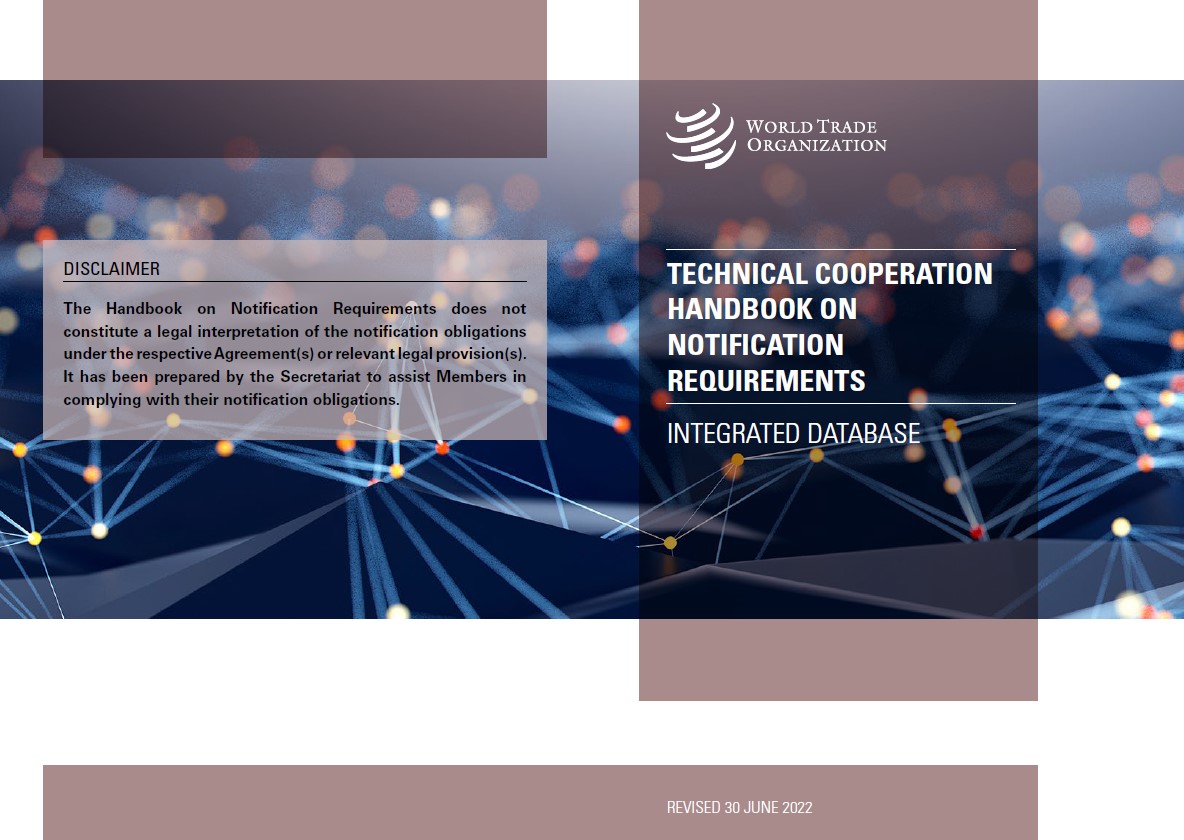tariffs
Integrated Database
The Integrated Database (IDB) contains time series of the tariffs applied by WTO members and acceding economies to imports from other WTO members. Data are provided at the most detailed product level (usually the eight to ten digit product level or tariff line code). The database also contains import statistics, including the value and volume of imports by country of origin and by tariff line. The integrated data and statistical indicators from this database are disseminated through the Tariff Analysis Online and WTO STATS portal.
Note:
The terms “country” and “countries” are used here for convenience. The terms cover WTO members that are separate customs territories or customs unions such as the EU.
What the IDB contains
The IDB contains the official time series of tariffs applied by WTO members and selected acceding countries to imports from other WTO members. Members notify data on an annual basis on:
- applied most-favoured nation (MFN) import tariffs at the level of national customs tariff nomenclature (at the most detailed level, for example HS codes with 8, 9 or 10 digits, as normally applied by the member's customs administration);
- import statistics in the same national tariff nomenclature as the corresponding MFN applied tariffs for the same year (i.e. same HS version and with the same level of disaggregation), including value (in USD or national currency) and volume (quantity and unit) by country of origin and by tariff line;
- where relevant, data required by the Transparency Mechanism for Preferential Trade Arrangements — the non-reciprocal preferential applied tariffs and associated import statistics, including the list of countries or separate customs territories to which they apply. More information on the data included in the IDB is contained in paragraph 1 of G/MA/367.
- optional data, including the following:
- preferential tariffs applied in the context of regional trade agreements (for example, free trade agreements or customs unions) including the list of partners and the preferential imports under these agreements
- other applied non-MFN tariffs — for example, tariffs applied on imports originating in non WTO members, including the list of partners and the imports under the non-MFN trading regime
- ad valorem equivalents (AVEs) of non-ad valorem (NAV) duties, as calculated by the member.
- applied internal taxes and other duties and charges at the tariff line level
- imports or proportion of imports (value and volume) under tariff rate quotas.
Data sources
The information on applied rates is drawn from the WTO’s Integrated Database (IDB). This is data that member governments supply annually on the tariffs they apply normally under the non-discrimination principle of most-favoured nation (MFN). Data on lower preferential duties under free trade agreements or preferential schemes for developing countries are available for some members. Members are also required to notify annual import statistics by country of origin and by product to the IDB. Data collected by the Secretariat are included in the IDB if these are approved for dissemination by concerned Member.
Status of notifications
Required by the Committee of Market Access, the WTO Secretariat publishes the Status of Submissions to the IDB (G/MA/IDB/2/Rev document series) every six months.
The overall current status of notifications can be found in the WTO notifications portal.
Background
Following a decision of November 1987 (BISD 34S/66), the General Agreement on Tariffs and Trade (GATT) Council launched the Integrated Database (IDB), with a view to storing official, updated, reliable and complete data needed to prepare reviews and assessments of tariff concessions during market access negotiations. The Committee on Market Access oversees the content, operation of, and access to, the IDB.
The IDB is covered by several decisions of the Committee on Market Access (G/MA/238, G/MA/239) and is referenced in the Transparency Mechanism on Preferential Trade Arrangements (WT/L/806) and in the Transparency Mechanism of Regional Trade Agreements (WT/L/671). The Committee decision adopted on 28 May 2019 (G/MA/367), containing the modalities and operation of the IDB, consolidates the rules governing the IDB and takes into account changes in technology to streamline the preparation of notifications by members.
Share
- ad valorem (AV): a tariff rate charged as percentage of the price
- applied rates: duties that are actually charged on imports. These can be below the bound rates
- bound rates (tariff binding): commitment not to increase a rate of duty beyond an agreed level. Once a rate of duty is bound, it may not be raised without compensating the affected parties
- digits, digit-level: (tariffs) a reference to the codes used to identify products. Categories of products are subdivided by adding digits. See Harmonized System
- Harmonized System: World Customs Organization’s system of code numbers for identifying products. The codes are standard up to six digits. Beyond that countries can introduce national distinctions for tariffs and many other purposes
- MFN (most-favoured-nation) tariff: normal non-discriminatory tariff charged on imports (excludes preferential tariffs under free trade agreements and other schemes or tariffs charged inside quotas)
- schedules: (for goods) list of bound tariff rates
- tariff line (TL in the tables): a product, as defined by a system of code numbers for tariffs
- More jargon: glossary

- Technical cooperation handbook on notification requirements — Tariffs and Non-Tariff Measures
Problems viewing this page? If so, please contact [email protected] giving details of the operating system and web browser you are using.